
A few times back, we received a project from a client asking for a complete overhaul of their SEO planning and implementation. When they came to us they were bogged down by the idea of how they tried everything required to stay visible on SERP, but nothing came to desired fruition.
They mentioned how despite trying every SEO activity & method, they were incessantly losing to their competitors.

Our SEO head asked, “Did you ever have a competitive analysis in SEO?”
To which they responded, “No, we are afraid we never had”.
And that’s when we knew where the problem was. They were busy carrying out their own game without analyzing their competitors’ moves (actually not knowing who their true competitors were), how they are better than them, and the gaps they could fill before their competitors.
Our SEO experts knew where we had to start a comprehensive SEO competitor analysis and they helped them gradually outdo their competitors by knowing their every move from a close shave.
In this blog, we are sharing what steps we took to resurrect our client’s failing SEO game plan. Before we jump straight into discussing how to do competitor analysis in SEO, let’s thoroughly understand why SEO competitor analysis is so crucial to your SEO strategy.
Looking for a Professional SEO Service Company?

SEO Head at JanBask Digital Design Says? “Most of the websites just focus on ranking their product pages and target a limited set of keywords and still struggle to climb up to the top 5 searches or at least at the bottom of the first page.
It’s because they lose sight of/never have sight of what exceptionally good their competitors are doing. Maybe, while you are focused on ranking just the product page, they are doing well off with blogs. Maybe while you are targeting limited keywords, they are targeting long-tail keywords as well. Knowing every move of your competition is the key and this is when SEO competitor analysis comes in handy and much needed.”
While competing in the digital world, it’s important to know who your competitors are & what they are doing to stand out. You just cannot sideline your competition & focus on your customers (that could be done but it won’t prepare you to outdo the real competition). You need to analyze the SEO game of your core competitors to look:
Competitor analysis in SEO will help you walk into your direct & indirect competitors’ SEO shoes and know how their ranking is strong, what keywords they are ranking for, what quality content they are delivering, how much quality traffic they are drawing & from what sources, and what more they are doing to win a place for themselves in the marketplace. This all will tell you your true standing, help create a roadmap to rectify and revamp your present & futuristic SEO strategy & initiatives. All in all, it will help you find answers to:
So if you are interested in knowing the complete stages of how to do competition analysis in SEO, continue reading this article. And at the bottom, we have shared a few SEO analytics tools for measuring competitors’ performance and power moves for the future.

Do you know you have two types of competitors in nutshell--- Direct & Indirect Customers?
These competitors sell homogeneous products & services like yours. The difference between you & them is because of either price, quality, marketing collateral, or all of them. So your target customers will evaluate you & them to compare and settle with either one of you as a loyal customer.
For example - Two companies selling luxury cars under brand names say, Tesla or Audi.
These competitors don’t have similar products or services as you, but the marketing collateral or content they produce digitally with keywords & essence that can be similar to that of your digital marketing efforts.
For example - Two digital learning platforms offering different courses but write the same motivational & career related content & marketing collateral to connect with customers emotionally.
How to go about finding your digital rivals?
Every business online that’s competing for the keywords that are important for your business are your direct or indirect competitors.
To go about finding them, with an SEO tool like Ahrefs, you can just enter the seed keywords that are relevant & important for your business and find other relevant keywords. Take the combination of the keywords & search them over search engines like Google & see which close competitors are most showing up in the top 5 results.
Suppose your online shoe business relates to keywords like “Shoe seller in Sydney” keywords, so have your searches around a combination of short & long-term keywords and find the possible name of the competitors who are ranking in the SERP.
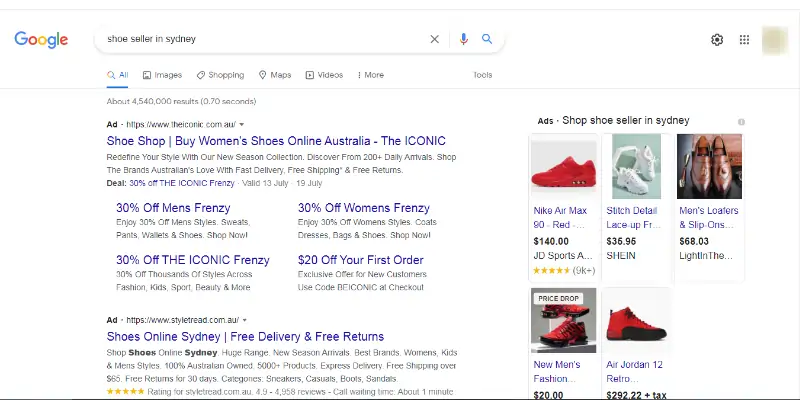
You can gather a list of such keywords on an SEO tool like Ahrefs, SemRush, Google Keyword planner, or others where it will suggest your thousand other keywords related to your seed keyword.
Many businesses who are not related to your business might be targeting the keyword & type of content that matches your value proposition. Just identify the keywords that are core to your products & offerings & search them over Google, from there you will see different levels of businesses writing somehow similar content with similar keywords but have totally different products as yours, these are your indirect competitors.
You need to track them also to be able to outdo everyone all together.
With keyword analytics tools like Google AdWords, you can find the keywords that relate to your business & get their paid data. Google AdWords will help you know which businesses or websites are bidding for the keywords which you are planning to target. The websites or businesses targeting the same keywords as you tell that they have similar product, content, value proposition to offer to your target audience. It’s well understood that these businesses are your direct competitors.
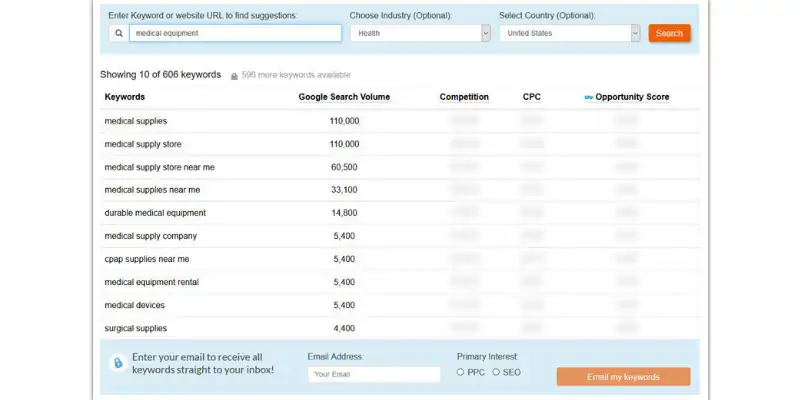
Evaluate your Strengths & Weakness and then do that for each one of your core competitors. Just because your competitors’ SEO game looks on fleek, doesn’t mean it is. Create a checklist of how you are better than them & how they are better than you. They might be cushioning some shortcomings that you can take advantage of & excel in the SEO game:
These are just a few, there could be gazillions of areas in which you just need to recognize where your competitors are still lagging and take it to your advantage, to tap the marketplace & win the customers’ attention.
Analyze the Competitor's Important Stats
Once you know who your competitors are & what strengths they have, there are certain metrics or stats that you need to analyze to understand your competition better. For this, you can use the Ahrefs batch analysis tool that helps you analyze metrics of your competitors like:
All these factors can be compared with your standing. This will help you realize the gap between you & your competition. It will give you a boost to catch up and work to get near your competition.
If your competitors are ranking high in SERP and you are not, one thing is clear that they have their keyword opportunities known very well. To be able to rank well in the SERP, look within your competitors, not just core competitors, but also other indirect competitors, and identify the search terms or long-term keywords they are all targeting.
The key is to:
Once you know the gap, the next step is to go around & fill it. You need to identify how you would go about infusing the newly found keywords that your competitors are ranking with. You have 2 options:
Do whichever suits you, just do that and ranking will eventually follow!
Focus on Identifying Competitors’ Organic Keywords
Go to Ahrefs site explorer, enter your competitors’ domain, select organic search, then organic keywords. There you will have a list of keywords with almost 150 countries on which they are ranking.
The list you will see can be gigantic, it is best to keep the position as min -10, as in to show you keyword data where your competitors are ranking in the top 10.
If the keyword difficulty for those keywords appears to be high, you can filter the KD column and find keywords with low to medium difficulty. There you will have their top keywords with quite a moderate difficulty on which you can easily rank.
Once you know what keyword gaps & opportunities you were missing, it’s time to look within each of your product or service pages and identify how your competitors are able to outrank you.
Here are the important elements that you need to analyze, compare, and optimize for better visibility in SERP:
These all are the core elements on any product page or blog that give Google indication about ranking & crawling. Identify how your competitors are creating their titles, H1 to H5, meta details, type of content, types of keywords, and proportions in which they are added.
Identify your competitors’ internal & external links with the “404 not found” error. Meaning broken links that are dead or are no longer available.

By identifying your competitors’ broken links, you can strengthen your backlinking and make your website more user & SEO friendly than your competitors. If you find any broken links on your competitor’s website, with some authorized backlinks, you can have those dead links to your fullest advantage by:
To analyze your competitors' broken links, you can use Ahrefs site explorer and follow these steps:
The key is to quickly assess your competitors’ broken links & produce relevant & better content before everyone else.
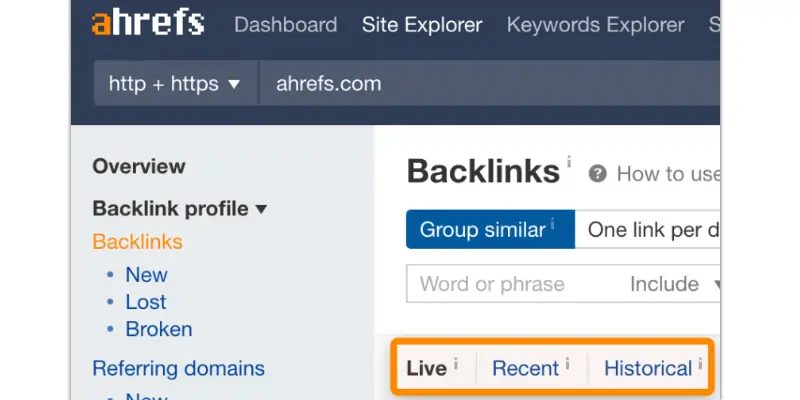
Inbound links or backlinks is another factor (out of 200ish some others) that Google considers for ranking a landing page. Without backlinks and focusing on just keywords, you would find it difficult to rank (blame Google crawlers).
Similar to finding the keyword opportunities, you need to find the linking opportunities which your competitors are grabbing. If you are able to gather the outlets from where your competitors are receiving links and focus on writing better content than them, you can significantly create your chances to snatch those backlinks from your competitors.So, you need to study how well-calculative your competitors’ link-building strategy & efforts are. To find out how your competitors’ highly relevant pages get the backlink, you can use the Moz Link Explorer tool. The tool will help you get a report on a list of 3rd party websites that links to your competitors (and sadly not you).
Focus only on High-Quality Backlinks
Just focus only on the quality backlinks they received from high-authority websites in your industry. Find answers to:
Pro tip - You can target the authority websites that give backlinks to your multiple competitors. Maybe websites that do listing blogs or have product reviews could be your option, there you can easily pitch in with quality content to such websites & grab a backlink to yourself.
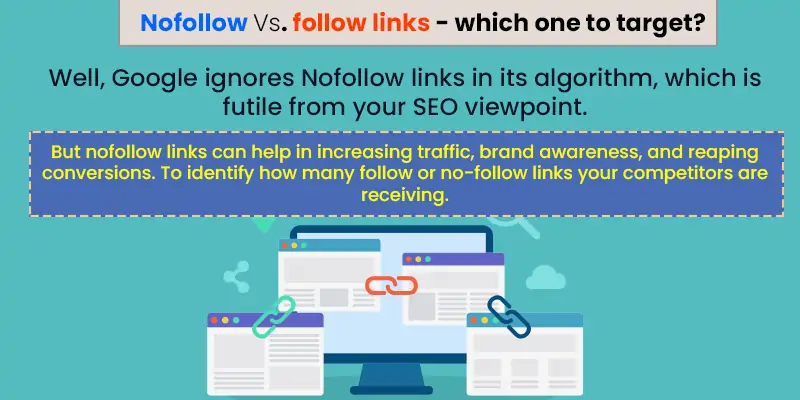
Keywords & backlinks could be one way to look into your competitors’ shoes, but looking into their top-performing pages or content could reveal some broader story.
Instead of just writing your own stuff, look around your competitors:
Note: Hey, we are not recommending just recreate what your competitors’ have written. The basic ideology is to write more value-added, informative content than your competitors. Content that could help treat the pain points of your readers and give them a better outlook or suggestions to treat their problem statements.
For instance, if your competitors are focused on writing “15 ways to treat hair fall”, you can always improve it and write “20 steps to treat hair fall that involves no chemicals”. Just gravitate towards the pain points of the user and serve them well-researched, data-rich, and visually pleasing content.
So the question is how to analyze your competitor’s top content?
Just go to “Moz Link Explorer” and write over your competitor’s URL and then move to the “Top Pages” tab.There you will have their top page URL, from which you can take the topics & content ideas. To know which keyword they are targeting on this popular content, you can head back to “Moz keyword explorer”, search these links there, and voila can find the keywords with ease.
To be able to win over competitors, you need to have a thorough understanding of how SERP results are displayed and what user intent is behind each keyword.
If your competitors are failing to meet that intent & SERP trend, you might have a chance to crack the nut rightly.
To understand the SERP pattern & user intent, you can start by simply Googling the seed keywords you want to target.
Let’s say, you are in the cooking business & want to target your content with the seed keyword “baked Lasagna”. On search you would find that the intent behind the keyword is the recipe for “baked lasagna”, and not its history, origin, culture, etc...just the recipe is what this keyword is intended for.

And you would also see the content type which is pressing the SERP results the most is the video format for that recipe. So there you will have an idea of how you need to go about prioritizing & writing or producing your content.
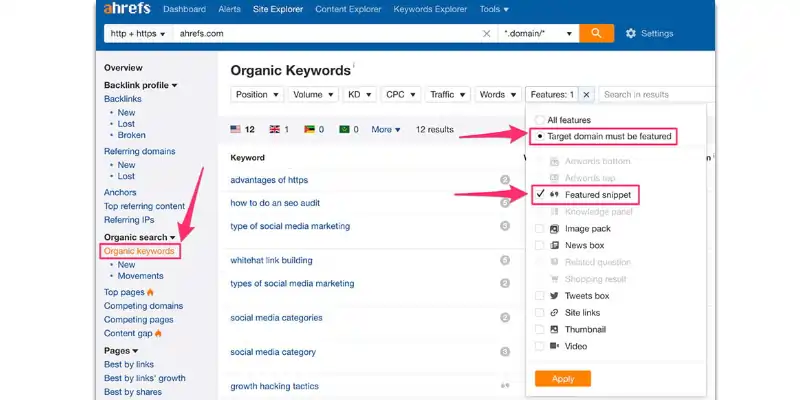
Do you know 9% of all clicks on the first page go to featured snippets? Featured snippets are another most important factor telling the strong standing of a website in the SERP.
To know which featured snippets your competitors own, it’s better to take the help of analysis tools like Ahrefs site explorer.
Visit Ahrefs site explorer:
You can do that with your core competitor websites and keep track of how many featured snippets they own. Remember that not always top ranking websites have their featured snippets. Even the pages at 2nd or 5th positions have chances to own the featured snippets (As almost 60% of featured snippets are from pages ranking on the bottom of the first page).
Even if your competitors are ranking on top, you can still fight for a spot for snippets & earn some authority & visibility for yourself.
You know if your competitors are placing bids on certain keywords, it’s evident that those keywords are quite important for their traffic & profit proliferation.
Knowing your competitors’ PPC activity can be quite insightful for your SEO roadmap. To go about finding it, you can take the help of Ahrefs site explorer’s PPC report.
Enter the URL in the tool, select paid search, and then PPC keywords, and there you will have a list of low-volume, highly converting keywords that your competitors are targeting.
The key is to target the volume keywords which are quite gainful when it comes to conversion. Use competitor data to get a sense of such keywords, experimentally use them throughout your SEO & ad campaigns, and you will be sorted.

You should know from which country your competitors’ get the most response. This will give you clues about where you should focus. Maybe you are failing because you are targeting limited keywords for limited countries, while your competitors are exploring global markets.
To get the traffic breakdown from different countries, you can use Ahrefs’ site explorer. Visit site explorer, enter the competitors’ domain name, go to overview on the left, select the organic search tab.
You can consider the top 5 countries from where your competitors are reaping the most traffic. Knowing so can help you know which countries you also need to target. You can plan & prepare content according to the taste & preferences of such countries.
If your competitors are targeting even non-English speaking countries, maybe there you can also follow and add a translator to your website or blog and help people navigate your website in their native language.
Our web design agency aims to make the clients’ website up for global competence, and have amazing language translation features and other navigational elements clubbed while designing any website.
Now you know the real deal behind SEO competitor analysis, let’s help you discover the competitor analysis SEO tools that are hot in the market.
Do you know 67% of all clicks go to the first 5 organic search results? To find out how those 5 spots were covered by your competitors, here are the top 10 SEO competitor analysis tools that will help you chalk your new & improved SEO game plan.
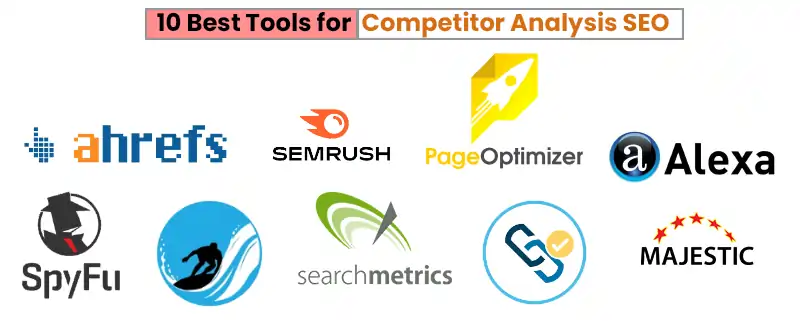
Our SEO team loves Ahrefs because it helps with identifying competitors' backlinks, keywords, organic traffic, top links or pages, paid keyword data, and every other thing you need to analyze and outdo your competitors.
We adore SEMrush because it has boatloads of relevant information that’s needed to analyze competition, like the tool helps you gauge your competitor’s traffic, target audience, lead generation, advertising strategies, lead generation sources, and other multiple analytics.
When it comes to gauging our on-page competitor analysis, we use Page Optimizer Pro. The tool is highly effective at making direct comparisons of your website with that of your competitors. It will help identify the page parameters where you are lacking, the meta details, technical SEO, content, direct competitors for the relevant keywords, and so much more.
Alexa traffic rank tool easily integrates with your Google Chrome browser and gives great analytics just at a click, without switching tabs. This tool will help you identify the relevant keywords and the sources from where your competitors are receiving most of the traffic.
What’s better than Google to analyze the competition? This search engine is a treasure of information. You can easily research the keyword here and identify the relevant competitors, their content, UI & UX, content length & quality & other keywords they are parallely targeting.
Research the keywords on keyword analytics tools and place another search in the SERP for those keywords to see who is appearing in the top 5 searches.
SpyFu is one of the best tools to gauge the gaps in your current SEO strategy by identifying your core competitors' types of organic keywords and paid keywords to spend on. The best tool to recognize where your competitors are most successful.
Surfer is an insightful tool with action-oriented suggestions. The tool does wonders at auditing your website & pages and finds gaps related to the content, keywords, meta tags, backlinks, and other factors compared to that of your competitors. On keywords you are planning to target, this tool will help you find the top 10 competitors for those keywords.
Searchmetrics is another great tool to analyze your competitors & help you level up your ranking game. The tool lets you discover the performance of competitors, find out new competitors, their link-building strategy, targeted keywords, popular pages, and everything you need to know about competitors, and improve your SEO value & optimize the site structure.
Moz link explorer lets you explore the competitive landscape, it helps measure your competitors’ backlinks, linking domains, inclusive of outbound & inbound links, valuable pages, content type, etc to help you improve your link-building practices & efforts.
Majestic SEO is a 100% useful tool for link analysis. It will help you navigate the backlinks & the sources for those links for your competitors. Which would be helpful to set your link-building strategy further.
You will find a handful number of competitor analysis SEO tools in the market named as:
And there are so many more SEO competitor analysis tools. Just see the features, prices & explore.
Your SEO competitor analysis report should have:
SEO competitor analysis is an ongoing process that can involve as many factors as you like, these are just a few but you can double it up or down as per your requirements. To get a complete & effective analysis, it’s high time to consult some professional SEO agency that knows how to do the heavy lifting for your gains.
Tell us in the comments below what factors do you look for while doing the competitor analysis in SEO?
Fancy Some More Reading About:
Competitor analysis in SEO is an imperative process that shouldn’t be underlooked at any cost. If you will just keep going with your SEO game, without looking around, this can cost you heavily. You should get a grip on your top competitors, how they are better than you, and what gaps you can fill in to outperform them --- all these questions should be on your mind.
While doing the competitive analysis in SEO, just focus on your competitors:
And the list is endless. You know competitive analysis isn't a one-day game, you need to do it at regular intervals to keep doing better & ultimately be the best. The key is to experiment and keep looking for what factors you need to identify to outdo your competitors. These are just a few bases on which we helped you do competitor analysis in SEO, there are a whole lot of other things that you can explore & bring your “A” game.
To give your SEO planning & activity a complete makeover, head over to our free project analysis & estimation, and explore our all-inclusive SEO services that are bound to give you long-lasting organic results along with a growing brand identity.
Interested in our SEO Competitor Analysis Services?

B
Thanks for your article! Now I understand why competitor analysis SEO is important for any business.
Z
May I get more information or relatable links to know more about competitor analysis SEO. Please revert!
E
Thanks for the informative article, it is really helpful!
M
Earlier I didn’t know much about competitor analysis SEO but thanks to my friend who shared the link of your article.
K
How can your team help me in performing competitor analysis SEO?
K
What an in-depth knowledge given by this post. Thanks team!
D
I want to learn SEO and I think this post really helped a lot in learning seo competitor analysis.
N
Really informative one, and competitor analysis is something that can help you gain edge over your tough competitors.